Today's feature is from our companion service, the Tactical Wire.
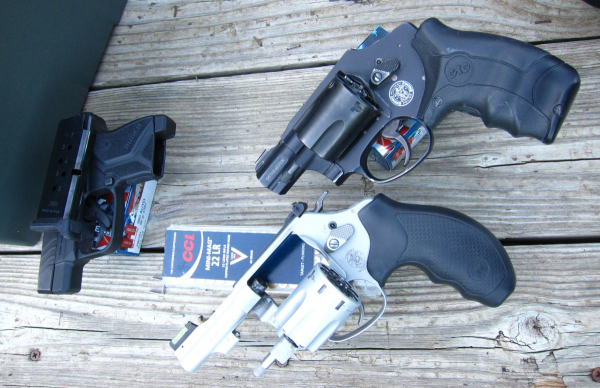
On a Facebook page devoted to the “noir” – snub revolver devotee, I’m With Roscoe, a member -- Dave Elderton – showed his take on Claude Werner’s Baseline Evaluation (as modified here). The basis is knowing what you can do with a particular gun in terms of accuracy at various distances. I dubbed it the “Baseline/Walk-back,” because it combines elements of the classic walk-back drill I’ve used in classes as ‘graduation exercises’ with the 100% shot accountability of the Tactical Professor’s Baseline Evaluation.
Dave simplified things by using a target I found appealing while I was on the job. As budgets were always tight and targets are costly, I’d stop by the copy machine on the way to the range to get a ream of “targets,” 8.5” x 11” copy paper.
Simple, right?
Dave started at three yards with the S&W M642 – a ca. 2” snub of the Centennial variety. He made the point that those who carry smaller guns than they regularly shoot may not be fully aware of their capabilities, kind of a “ballistic Dunning–Kruger effect.” I regularly carry the GLOCK 19, but have found use for smaller hardware; assuming that the gun that’s most quickly available is the easy-to-shoot compact-service style pistol is foolish.
I elected to try Dave’s course of fire. Ensuring zero is the first step and I was short on time – as usual. I elected to skip the 3, 5 and 7 yard strings, starting at 10 yards. For purposes of the aiming point and to get a grasp of my accuracy (or relative lack thereof), I selected the NRA B-8 repair center as my target of choice.
The drill is five rounds from ready – Dave uses the high ready – though you could do five singles per yard line, work from the holster and use a timer if you wanted to move ahead. I’d start from guard, no timer and just concentrate on the best shooting I could do to assess the baseline before moving on to greater complexity.
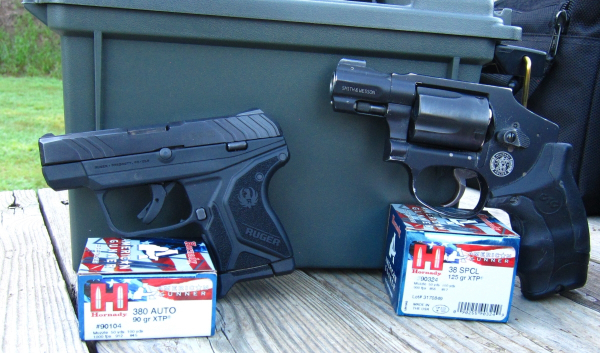
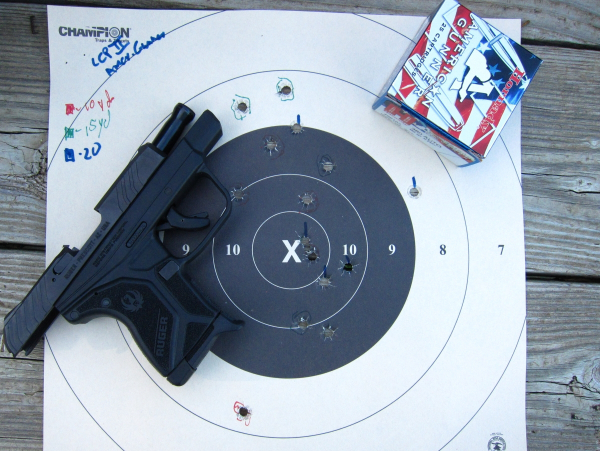
The guns I selected for this exercise included the Ruger LCP II – a real handful in 380 ACP, the S&W M&P 340 and, for grins, the S&W M317-3, a 22 LR with a three-inch barrel.
Starting with the LCP II loaded with Hornady American Gunner 90 grain XTP, shot from 10 yards, fifteen yards and twenty yards. All rounds stayed on paper – in fact, 11 of the fifteen rounds fired went into the “black” (the 9, 10 and “x” rings). Only four rounds wandered into the “8,” making me think I could wander back to 25 yards and perhaps beyond.
The M&P 340 has the XS Sights express sight system. I used Hornady American Gunner 38 Special 125 grain XTP ammo and found that I was shooting 6 ½” low at thirty feet . . . That’s why we check point of aim/point of impact on a range, not on the street. Using the XS sight as it was designed – covering the bull with the “ball” – I was back in the game. I ended with five hits outside the bull, all on the paper as the image shows.
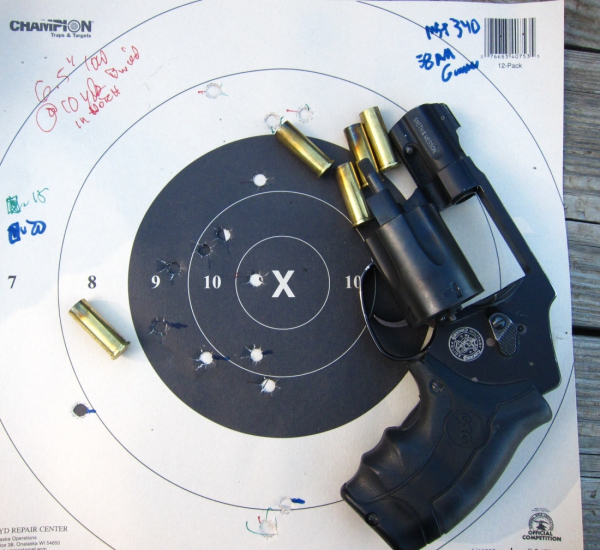
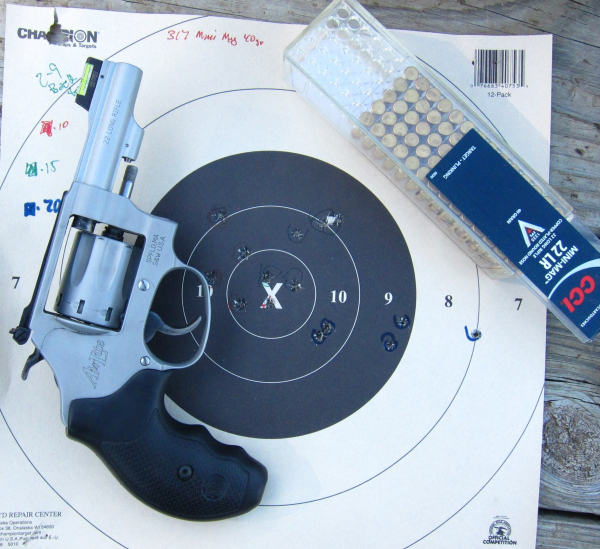
Finally, the AirLite Kit Gun in 22 LR; I shot it with CCI Mini-Mag ammo, consisting of 40 grain solids. It’s premium-class mass produced, easily found rimfire ammo. Firing the ten and fifteen yard strings saw a result with a pair of 9s, the rest in the 10 and X. At 20 yards, I tended right, still staying well within the rings, producing a pair of 10s, a pair of 9s and my solitary “8” ring hit. I was surprised as I’ve shot this sample a lot and didn’t think it was particularly accurate.
Wrong again.
With practice and learning where to hold (establishing zero), very compact guns are useful at least to 20 yards on an 8-inch target (the boundary of the 7-ring on the B-8) in ideal conditions. Sort of ideal conditions – I was in the midst of a group of Halictidae -- sweat bees. While they don’t tend to sting, they do like to buzz in the electronic ear pro and get between my eyes and the sights . . .
The guns make it interesting too. I found handling problematic with the LCP II. It’s a very small gun. It requires a hammer-fist hold and it takes a long time to make those hits – limiting its utility in a fight.
The Crimson Trace Lasergrips on the M&P340 and the large rubber S&W stocks on the M317 made those guns far easier to shoot. All shooting from the M317 Kit Gun was double-action. I’d likely have “flinched” one off the target if I’d tried thumbing the hammer back.
Give this a try to see what your baseline is – how far back can you guarantee a hit with the gun you really carry . . . with every shot, in ideal conditions?
- - Rich Grassi